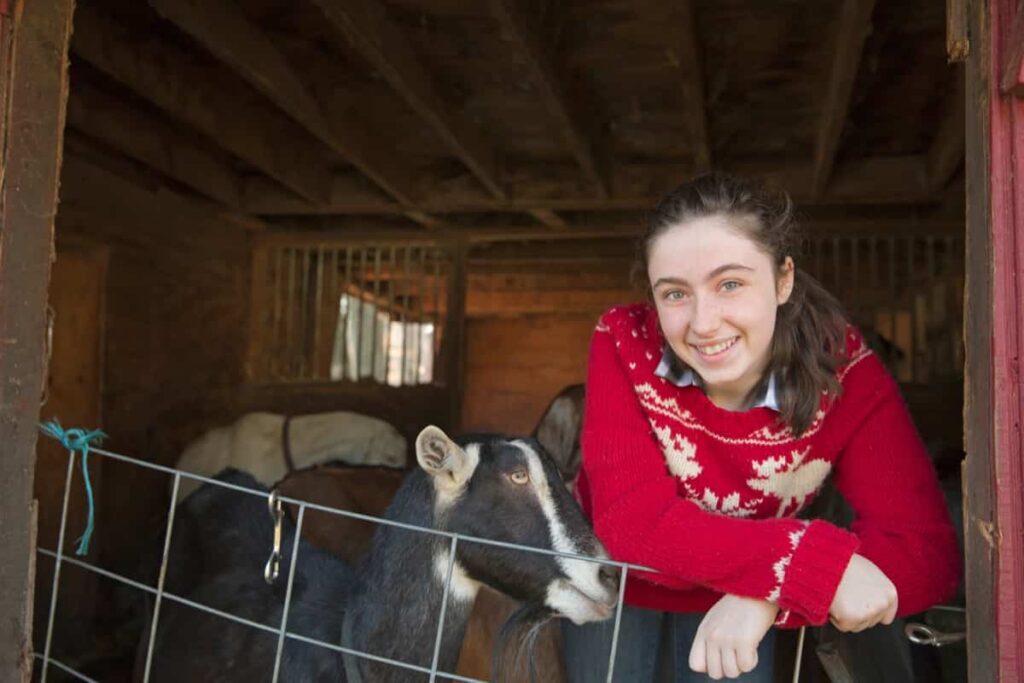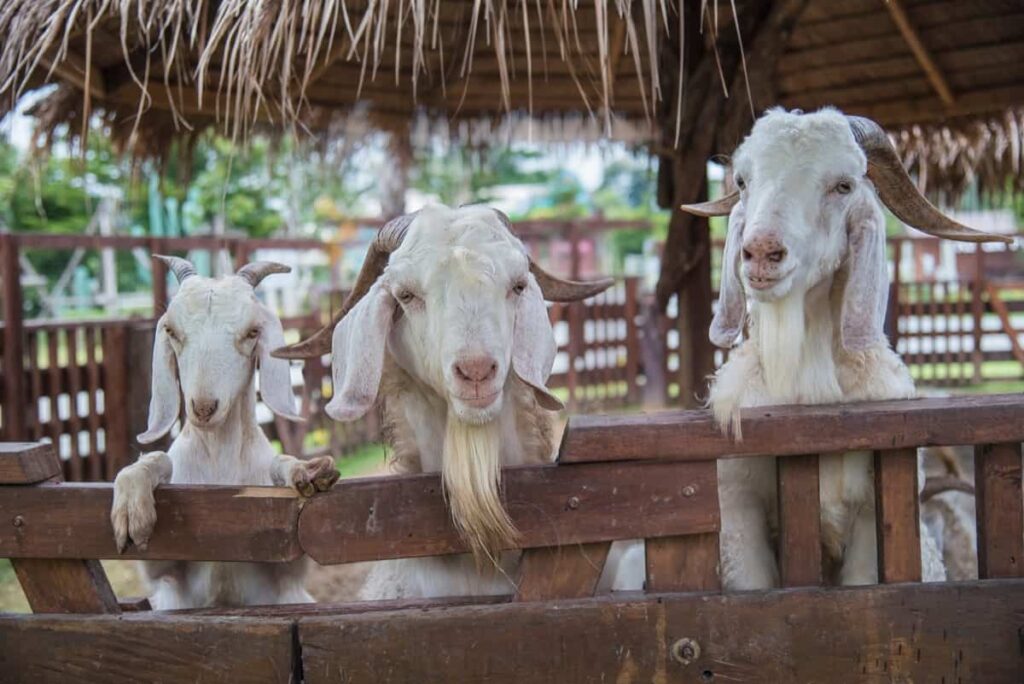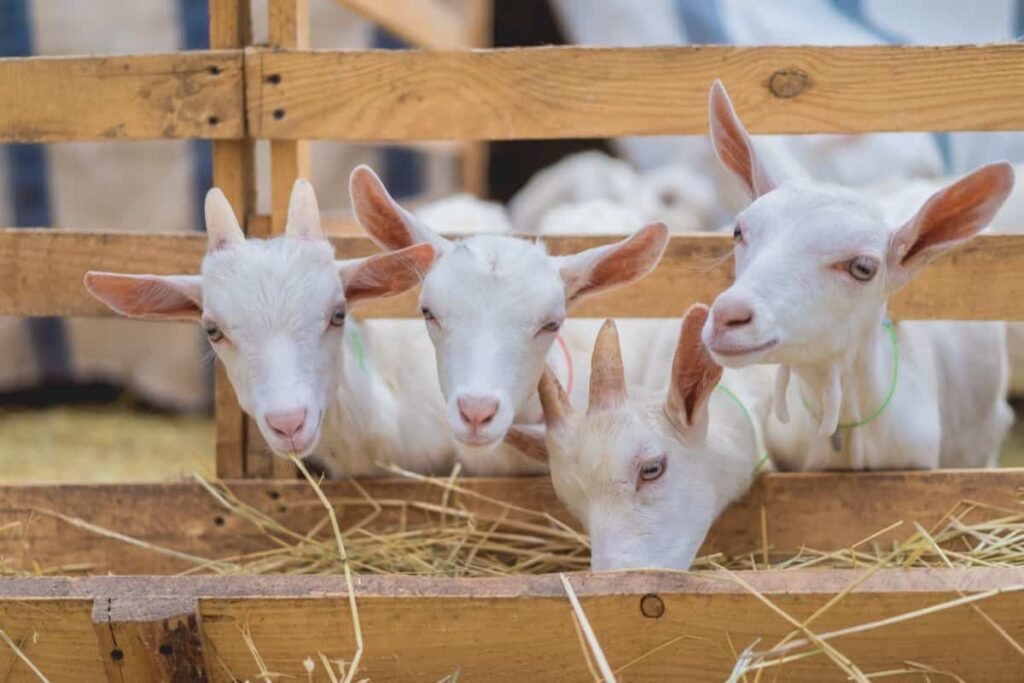Innovative housing and shelter designs play an important role in profitable goat farming. Adequate housing protects goats from extreme weather conditions such as excessive heat, cold, rain, and predator attacks. To ensure proper care and management, it is essential to have separate housing arrangements for different categories of goats, such as adult females, breeding males, and growers. The size of the shed or house required for goats depends on the number of goats being reared on the farm.

As the initial investment in goat farming, investing wisely in the housing system is crucial. Beginner goat farmers or entrepreneurs often need to invest more money in goat housing design. Using innovative and sustainable housing designs, farmers can maximize space, provide exercise opportunities, and create an aesthetically pleasing environment for their goats while minimizing costs. By ensuring proper housing and shelter, goat farmers can maintain the health and productivity of their herds and increase profits in their businesses.
Shelter Designs for Profitable Goat Farming
What is Innovative Goat Housing and Shelter Designing?
- Housing and shelter for goat farming are essential for providing goats with a safe and hygienic environment. Proper ventilation, good drainage, and free access to sunlight are important factors when building a goat shed.
- The interior temperature of the shelter should be maintained at a desirable level of 28 to 30°C, which can be achieved by constructing a shed with a sufficient height of 3 m at the periphery and 3.5 m at the center.
- The orientation of the shed for goat housing is also important, depending on the climate. In arid regions, the longitudinal axis of the goat shed should be east-west to prevent sunlight from entering the shed and heating the stall.
- In contrast, in humid and high rainfall areas, the long axis should be north-south to allow sunlight to enter the shed and keep it warm and dry.
- The roof protects from sun and rain and can be different, such as a shed, gable, or modified gable style. The floor can be packed earth, concrete, or slatted and should have a slope of about 5% for good drainage.
- Raised platforms where goats can lie above the floor and away from manure and urine are beneficial. Slatted floors are preferred in tropical and subtropical areas, requiring less labor to clean and maintain.
- The manure, urine, and debris can drop through the slatted floor, removing a major source of disease and parasite infestation. The gap between the slats should be 1.4 to 1.6 cm to allow easy passage of fecal material and guarantee safe footing for the animals.
- Regular disposal of dung and urine is essential to keep the animal house hygienic. Provision needs to be made for goats to see each other, even if penned separately, as goats like to see each other. The buck should be housed separately, while pregnant goats should be maintained individually.
- Kids should be kept in warm houses with proper drainage facilities, especially in chilly and wet weather. Adequate space should be given to each goat if maintained individually or in a group, and overcrowding should be avoided.
- The floor space requirement for different categories of goats varies from 5 m²/head for a breeding buck/pregnant doe to 1 m²/head for a grower.
Factors to Consider When Designing Goat Housing and Shelters
- When designing a goat housing or shelter, there are several factors to consider to ensure the health and well-being of the goats. First, select a dry, elevated location to prevent flooding and dampness.
- Adequate space, proper ventilation, and lighting are essential for goats to move around and maintain air quality.
- The flooring should be slip-resistant, dry, and easy to clean, and construction materials should be durable, non-toxic, and easy to maintain.
- The local climate and proper drainage systems should also be considered. The goat housing area must be secure from predators and thieves, and regular cleaning and maintenance are essential for preventing disease outbreaks and ensuring your goats’ health.
In case you missed it: Best Practices for Disease Prevention and Management in Goats: Strategies for Maintaining a Healthy Herd

Innovative Goat Housing Designs
- Alaskan goat igloos: These igloos are an excellent option for colder climates, and if you have an old dog house around your property, you can use it as a goat house.
- The small animal shelter: This shelter is not just meant for inspiration; you can also purchase it by following the instructions provided. It is designed for small animals, including goats.
- Large goat shelter: This is a great shelter option if you have multiple goats, including larger breed goats. The shelter does not have a tutorial, but you can use the picture to inspire you to build your version.
- Pallet goat shed: This shelter is made from pallets and is cost-effective. You can use this shelter for your goats as close to free as possible.
- The lean-to goat barn: This barn is well-built and extremely functional, but there is no tutorial on how to build it. However, you can use this as inspiration for your future build.
- The designed goat shelter: This little goat house has a raised bed, a ramp to help goats climb up and down, and an area for milking or birthing.
- Double-sized pallet goat structure: This shelter is a cost-effective and functional option for goat owners. The tutorial has plenty of pictures to help you along the way.
- The frugal scrap wood goat shelter: This shelter is made from scrap wood and has multiple little houses connected, making it a great place for goats to play and hide.
- The goat shed with stalls: This shed has two stalls, making it a functional option for your pasture.
- Goat playground and shelter: This building provides goats shelter and a climbing toy. There is also a place for chickens if you raise them.
- The simple goat shelter: This shelter is another option you can purchase instead of building. However, it is functional and well-designed.
Innovative Goat Housing Shelter Designs
- Goat housing over ground: The floor of this type of house can be made with brick and cement or simply with soil. Spreading dry straw over the floor is recommended to keep it dry and clean.
- Goat housing over pole: This type of house is elevated about 1 to 1.5 meters (3.5 to 5 ft) from the ground and is suitable for goat farming because it is easy to clean. The poles and floor are usually bamboo or wood, keeping the goats free from damp conditions and floodwater.
- Concrete house: This type of goat house is fully made of concrete and provides a safe environment for goats, keeping them safe from predators. Although it is more expensive, it is easy to clean and maintain.
Required Space for Goats
- As goats increase in body size and weight, they require more space.
- 1.8 meter * 1.8 meters * 2.5 meters (5.5 ft * 5.5 ft * 8.5 ft) house can accommodate ten small goats.
- Every adult goat requires 0.75 meters * 4.5 meters * 4.8 meters of housing space.
- Billy goat needs 2.4 meters * 1.8 meters of housing space.
- It is recommended to keep nursing and pregnant goats separate.
In case you missed it: A Guide to Small-Scale Rural Goat Farming: Tips, Tricks, and Best Practices

Space for Goats According to Their Age and Nature
- Baby goat: 0.3 square meters
- Adult goat: 1.5 square meters
- Pregnant goat: 1.9 square meters
- Billy goat: 2.8 square meters
Tips for Building Your Goat Housing or Shelter
- Choose a dry and elevated location: This will protect your goats from floods and keep the floor of the house dry.
- Provide adequate ventilation: Ensure the house has enough openings for air and light to pass through. This will keep the house fresh and airy and help prevent respiratory problems in goats.
- Control temperature and moisture: Make the house so it can regulate temperature and moisture levels, providing a comfortable environment for your goats.
- Keep the house dry: Dampness can lead to the development of various diseases, so ensure that the house remains dry and well-ventilated.
- Protect from rainwater: Prevent rainwater from entering the house by ensuring proper drainage and a roof that is in good condition.
- Choose sturdy construction materials: Use concrete or bamboo poles to construct walls that can withstand harsh weather conditions and protect your goats.
- Provide ample space: Make sure the house has enough space for your goats to move around and rest comfortably.
- Keep the house clean: Regular cleaning is essential for keeping your goats healthy and preventing the spread of disease.
- Pay extra attention during rainy and winter seasons: Goats are susceptible to pneumonia, so take extra precautions to protect them during cold and wet weather.
Conclusion
Innovative housing and shelter designs can significantly improve the profitability of goat farming by reducing labor costs, increasing productivity, and enhancing animal welfare. Adopting these designs requires careful planning and consideration of factors such as climate, budget, and herd size.
- Types of Grass Growing for Goat Farm
- How to Train Goats for Milking: A Beginners Guide
- Goat Milking Practices and Equipment: A Beginner’s Guide
- Goat Farming for Fiber: Producing Mohair and Cashmere
- Maximizing Goat Milk Production: Tips for Dairy Goat Farmers
- Goat Farming as a Family Business: Strategies for Success
- Profitable Kenya Goat Breeds for Commercial Dairy and Meat Business
- Unlock the Secrets of Oberhasli Goat: Discover Raising and Management Practices
- Ultimate Guide to Myotonic Goats: Explore Profile to Raising